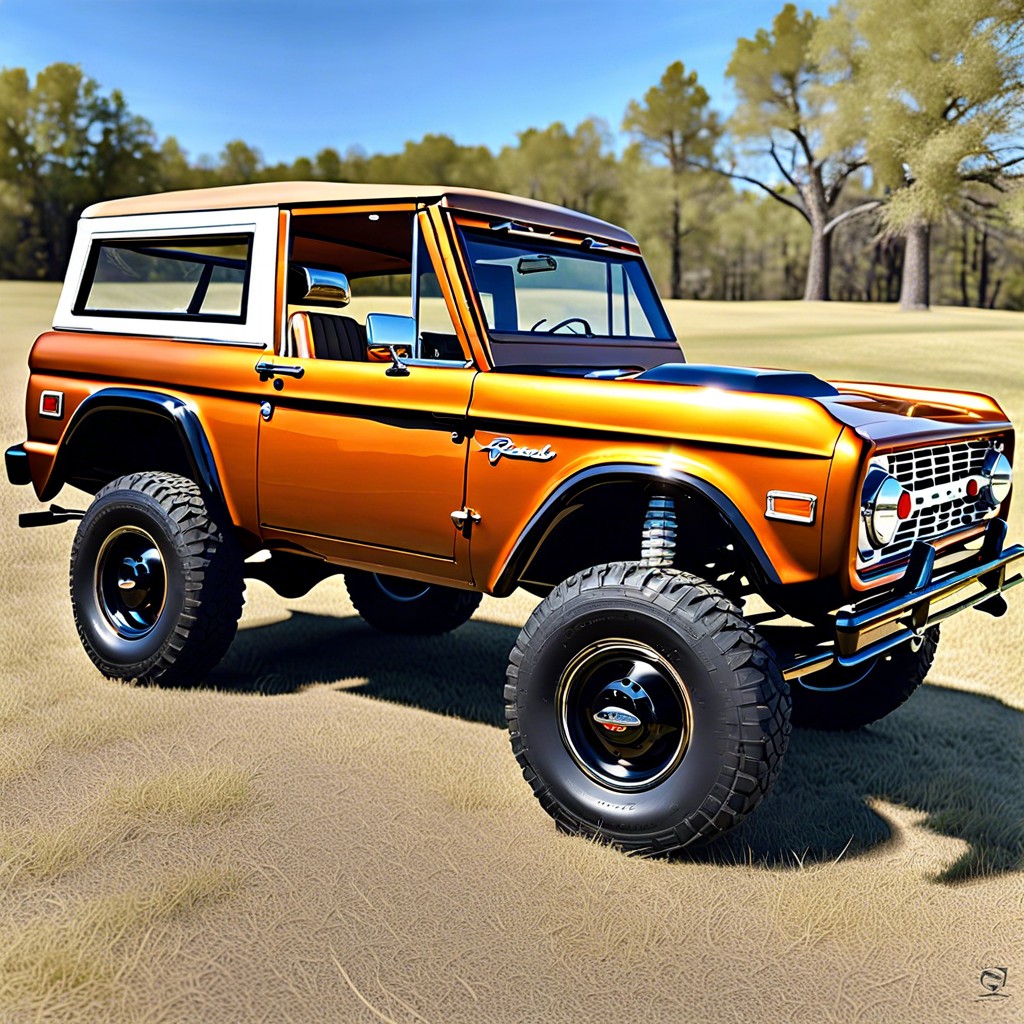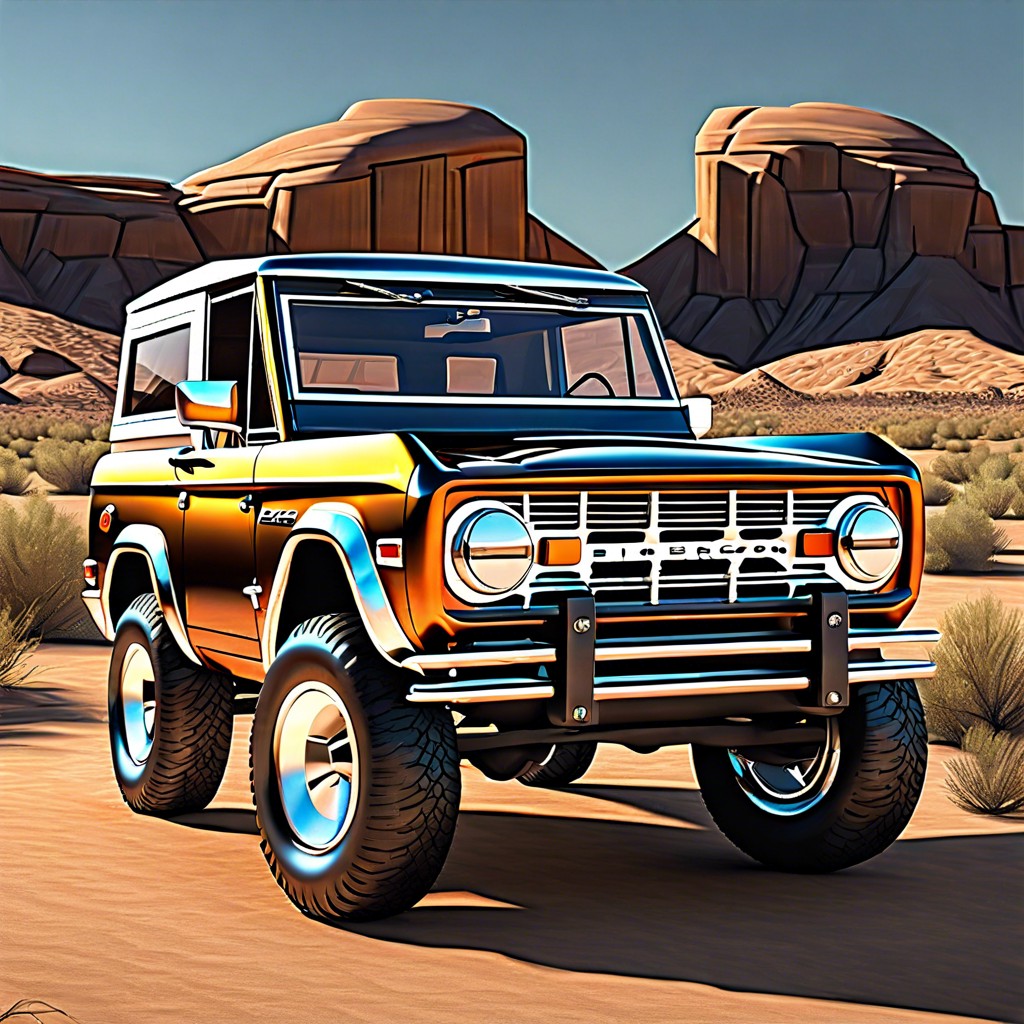Last updated on
Explore a variety of garage floor ideas that will transform this often overlooked space into an aesthetically pleasing and functional extension of your home.
Garage floors often get overlooked in home decor, but they can make a significant impact on the overall aesthetics and functionality of your space. Whether you’re aiming for a polished, high-end finish or a durable surface that can withstand heavy-duty use, there are plenty of garage floor ideas to suit your needs.
From epoxy coatings and interlocking tiles to concrete stains and rubber mats, this article delves into the nitty-gritty of each option, providing you with the essential information to make the best choice for your garage.
So, buckle up and get ready to transform your garage floor into a beautiful and practical extension of your home.
Epoxy Flooring

Epoxy flooring is a top pick due to its durability and aesthetic appeal. It is a type of coating that adheres well to concrete, providing a high-gloss, impervious finish. Not only does it resist oil stains and water, but it also withstands heavy traffic exceptionally well.
Select an epoxy kit that includes base colors, flakes and a clear coat. Typically, installation requires careful preparation of the concrete surface, including cleaning and, if necessary, grinding. Be sure to follow the manufacturer’s instructions for best results.
The process for application includes:
- Mixing the epoxy solutions
- Applying the first layer of epoxy
- Sprinkling the color flakes
- After drying, adding the epoxy clear coat.
Remember that while epoxy flooring is DIY friendly, hiring a professional might be the best bet for those who seek a flawless finish, as the process requires precision and a careful hand.
With a variety of color options available, you can easily customize your garage floor to match your overall aesthetic. This makes epoxy flooring a versatile and alluring choice for garage floors.
Concrete Stain

One of the primary advantages of opting for a concrete stain for your garage floor is its durability and easy maintenance. The stain penetrates the surface, changing the color of the concrete, and leaving a rich and vibrant hue. The resulting finish is resistant to chips, scratches, and spills – a handy feature to have considering the high-traffic nature of a garage.
Depending on personal preference, two different types of stains can be chosen: acid-based and water-based. Acid-based stains chemically react with the concrete to form unique and variegated colors, while water-based stains provide more consistent and solid colors.
To apply a concrete stain, the following steps should be followed:
- Clean the surface: Removal of dirt, grease, and debris is critical for the stain to properly adhere.
- Apply the stain: This can be done using a sprayer for a more even application.
- Seal the stain: After allowing the stain to dry, a seal should be applied to protect the finished product and enhance its lifespan.
Adding a beautiful and practical touch to your garage, concrete stains combine aesthetics and function in an unprecedented manner, making it a reputable choice among homeowners.
Interlocking Tiles
Interlocking tiles provide a versatile and durable option for garage floors, best suited for those who intend to use their garage for more than just vehicle storage. These tiles are readily available in a variety of materials like hard plastic, vinyl, and rubber, each having its own unique pros and cons.
One of its main selling points is the ease of installation. With their unique design, they simply snap together, creating a seamless surface which can easily be executed as a DIY project – no extensive surface preparation or adhesive required. The tiles are also easy to clean and maintain, typically requiring only a sweep or a mop.
A distinctive advantage of interlocking tiles is their ability to withstand heavy vehicles, oil spills and other harsh substances, ensuring longevity of the floor without sacrificing aesthetics. Customizing the look of your garage floor is another exciting aspect as the tiles come in various colors, patterns and styles to match your taste.
In addition, interlocking tiles provide superior comfort and resilience. The cushioning effect of the tiles can reduce fatigue during long hours of standing and working on the floor. The tiles also possess good insulation properties and can reduce the cold transmitted from the concrete floor, allowing for a more comfortable working environment.
Make sure to pre-measure your garage accurately before purchasing the tiles. With the right preparation and choice, interlocking tiles can turn your garage floor from drab to fab while boosting its functionality.
Rubber Mats

Rubber mats offer a unique blend of durability, comfort, and easy installation. Their resilient material is able to withstand high foot traffic, heavy machinery, and resist chemical spills, making it a functional choice for busy garages.
1. Durability: Rubber is a robust material that suffers little damage from daily garage activities. It’s able to withstand the weight of heavy vehicles and tools, and can also resist extreme temperature changes.
2. Easy Installation: Unlike other flooring types, rubber mats can be laid down without any special tools or adhesives. Simply roll them out on the garage floor and trim to fit.
3. Comfort: The natural elasticity of rubber provides a cushioned surface that is comfortable to walk on, thus reducing fatigue during prolonged activities.
4. Noise Reduction: The dense material absorbs sound, creating a quieter environment.
5. Easy to Clean: Rubber mats can be easily swept or vacuumed. For deeper cleaning, they can be mopped with a mild detergent and water solution.
6. Variety: Rubber mats are available in an array of colors, patterns, and thicknesses, allowing for customization to your personal aesthetic.
To get started, measure your garage floor to determine the square footage, which will ascertain the number and size of mats needed. Once acquired, simply roll the mats out and trim for an exact fit. For cleaning, sweep and mop as needed, preserving new appearances and prolonging longevity. Choosing a rubber mat for your garage floor promises a blend of practical function and aesthetic appeal.
Polished Concrete

Polished concrete provides an appealingly sleek surface that is not only attractive, but also quite durable. Achieved through a meticulous grinding and polishing process, there’s a versatility to the final look with choices ranging from matte to high-gloss finishes.
Furthermore, the specific level of shine isn’t the only customizable feature. There can be an addition of stained color, or even the possibility of scoring patterns into the surface to create beautifully unique designs. Each step introduces new opportunities for customization, allowing homeowners to create a floor that accurately reflects their personal aesthetic.
Bear in mind, this flooring option is not a quick DIY project. The process demands equipment, such as concrete grinders and diamond polishing pads. Careful considerations about the specifics of the concrete surface and how it’s treated are paramount, as is the need for safety gear. Hiring a professional for this project is highly recommended.
The durability of polished concrete is undoubtedly one of its most commendable qualities. It’s resistant to tire marks, oil stains, and other common garage messes, making it an ideal choice for hectic, high-traffic areas. Plus, it’s easy to clean – all you need is a damp mop to maintain it.
For an eco-friendly and cost-effective floor with long-lasting allure, polished concrete is certainly a formidable contender. With it, homeowners can expect the perfect blend of function, durability, and aesthetic charm.
Vinyl Flooring
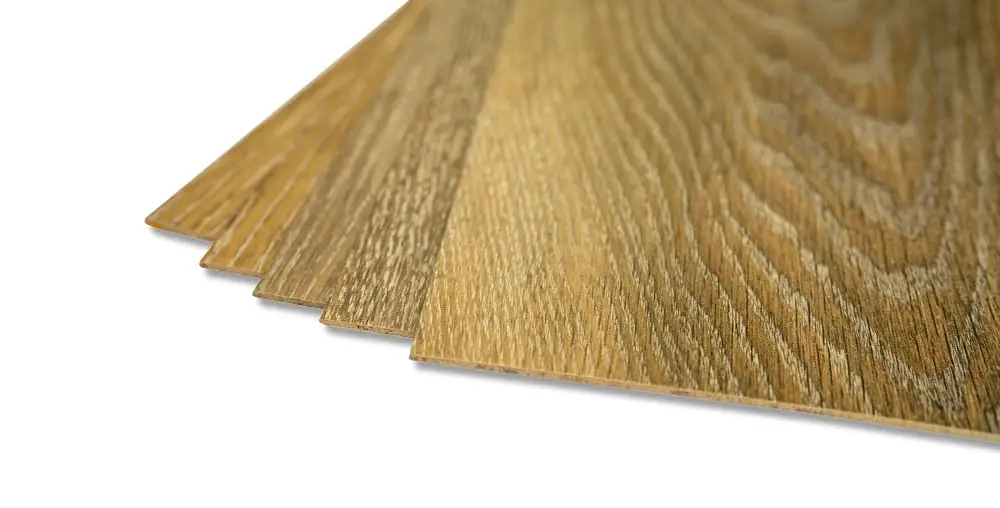
Vinyl flooring offers a seamless, resilient, and waterproof option for the garage. Available in a variety of designs mimicking stone, tile, or wood, this flooring type elevates your garage’s aesthetic while providing ample durability and ease of maintenance.
It’s easy to install, usually arriving in large rolls or interlocking tiles that you can lay directly onto your garage floor. Simply clean the concrete slab thoroughly, trim the flooring to fit your space and adhere correctly. The interlocking tiles, most popular for garage use, have an intuitive click-lock system, drastically simplifying the installation process.
The highly resistant nature of this material works wonders against common garage threats like oil, grease, and car chemicals. Regular sweeping and occasional mopping should keep it in perfect condition. Nonetheless, it’s essential to make sure it’s not subjected to sharp objects or high impact tools as it could result in damage.
Vinyl flooring stands as a cost-effective and aesthetically pleasing option for those wanting to transform their garage flooring without exhaustive labor and excessive expenditure. It’s a versatile choice providing comfort, warmth, and a broad range of design options that can attest to any homeowner’s taste.
Ceramic Tiles

Ceramic tiles, a popular choice in garages, are known for their durability, resistance to water and stains, and their aesthetic appeal. Renowned for their versatile designs – from simple, clean cuts to bold patterns – these tiles provide plenty of opportunities to play with aesthetics.
Installing these tiles involves a straightforward process. First, measure the garage floor area to determine how many tiles you need. Remember to factor in extra tiles for cuts and breaks. Next, ensure the floor surface is clean, dry, and even before you begin laying out the tiles.
One advantage of ceramic tiles is their maintenance convenience; the glazed variety can be wiped clean with a damp microfiber cloth. For unglazed tiles, a mixture of water and mild detergent is effective in removing grime.
While ceramic tiles are durable, it’s crucial to remember that dropped heavy tools can cause them to crack. Yet, such damage is often isolated to the impacted tile, making replacement easy without affecting the rest of the floor.
Added factors to consider include cost and installation experience. While ceramic tiles can be more expensive than some garage flooring options, their durability and appeal often justify the investment, and depending on the complexity of the pattern, professional installation may be a wise choice.
In cooler climates, ceramic tiles may feel cold underfoot, which can be counteracted with underfloor radiant heating if the budget allows. Proper research and planning ensure that the benefits of ceramic tiles are fully maximized.
Natural Stone

Utilizing natural stone for a garage floor creates an elegant and unique aesthetic. The high-end appeal of this choice is derived from multiple factors including the varied hues, beautiful textures, and patterns that individual stones offer.
While choosing the stone, durability should be taken into account. Slate, granite, and travertine are popular choices as they can sustain heavy loads. It’s worth mentioning, however, that natural stone requires a sealed finish to protect against stains and damage from vehicles or tools.
Installation involves a meticulous process of setting each stone in a bed of mortar, with the pieces fitted closely together for a seamless look. Therefore, professional help might be necessary, as this task requires precision and expertise.
Care and maintenance for stone flooring majorly involves regular sweeping and mopping. Additionally, resealing every few years can help maintain the floor quality.
Despite the relatively high cost and effort involved in installation, natural stone flooring provides a timeless, luxurious appeal, making it a valuable addition to any garage.
Brick Flooring

Brick flooring can lend a timeless, rustic charm to any garage, appealing with its warm, earthy tones and unique texture. Ideal for those seeking durability and a distinctive look, it offers a plethora of benefits.
Firstly, a brick floor can withstand heavy loads, such as vehicles and large equipment, without cracking or becoming damaged. This durability means it requires minimal maintenance and can last for decades.
Secondly, it is slip-resistant, making it a safe choice. This feature is particularly useful in a garage setting where liquid spills or moisture might be a common ordeal.
Thirdly, brick flooring is easy to install, especially if choosing thin brick veneers. One can lay it directly over an existing concrete floor, saving on time and labour cost.
Lastly, brick flooring is versatile in the aesthetic appeal, available in various colors and patterns. You can create a herringbone, basket weave, or even a diagonal pattern, enhancing the uniqueness of your garage.
To maintain a brick floor, a regular sweeping to remove dirt and a sealant to protect the finish will suffice, ensuring the floor’s longevity and stunning aesthetic.
Cork Flooring
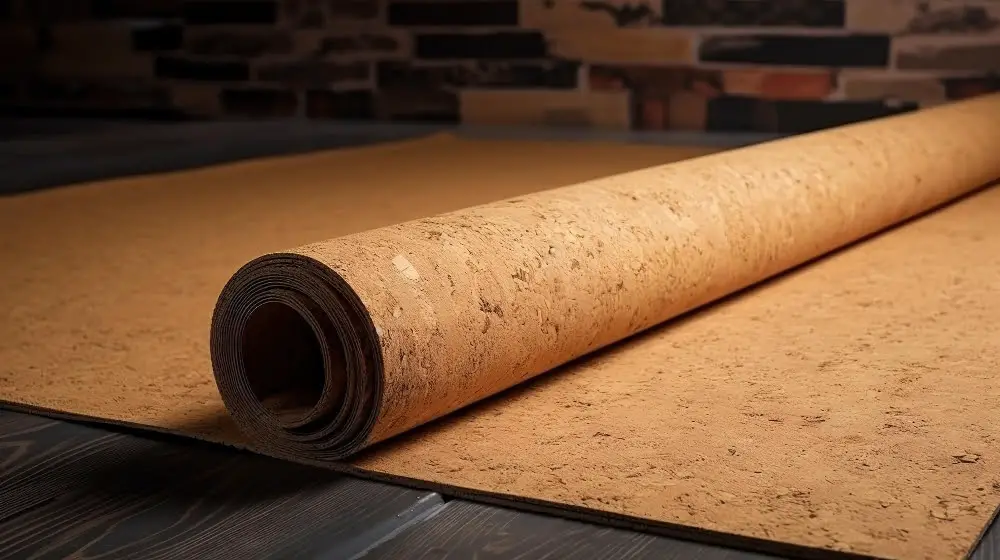
Cork flooring, an unconventional choice, is gaining traction for garage spaces owing to its distinctive advantages. Known for being eco-friendly, it is produced from the bark of the cork oak tree, which regenerates naturally. This feature makes it a sustainable option.
The spongy nature of cork has shock-absorbent qualities. Dropping heavy tools or equipment inadvertently won’t do much harm to the floor. Additionally, cork has resistive properties against pests and molds, providing an extra layer of protection against such garage nuisances.
Comfort is another significant benefit offered by cork. It’s softer and warmer underfoot than many other materials, making it a preferable choice for those who spend significant time in their garage. Furthermore, it has impressive sound insulation capabilities, effectively reducing noises and echoes within the space.
Installation of cork flooring is relatively straightforward. One recommended approach involves using cork tiles, which need to be glued down. Sealant application post-installation is also suggested to enhance durability and water resistance.
In terms of aesthetics, it offers a unique appearance with variegation in its natural color, making each tile somewhat different from the other. While it may not be suited to all tastes, those looking for a distinctive and natural design might find cork flooring an appealing option.
Regular maintenance includes wiping spills immediately to prevent stains and damage. Also, recoating every few years helps retain its original sheen and provides extended protection.
It’s crucial to mention that, while it offers a host of benefits, cork flooring may not be ideal for high-traffic garages due to its softer nature. Careful consideration and proper planning is noticed to ensure it suits the individual needs of the garage.
Polyaspartic Coating

Polyaspartic coatings, primarily known for their fast curing times, offer an exceptionally durable finish. They can be applied in virtually any temperature, from freezing cold to scorching heat, making them an excellent choice for garages in any location.
- High abrasion resistance: Unlike other flooring options, these coatings are highly resistant to wear and tear, reducing the need for frequent replacements.
- Resistant to temperature extremes: They maintain their integrity in a wide range of temperatures, making them suitable for fluctuating weather conditions.
- Fast curing times: These coatings are favored for their rapid curing process; a garage floor can be prepped, coated, and cured within a day, minimizing downtime.
- Chemical resistance: Another standout feature is their resistance to many common garage chemicals such as oil and gasoline. Moreover, they can withstand harsh cleaning chemicals, allowing for easy upkeep.
- Inherent gloss: Polyaspartic coatings provide a high gloss finish, which can be adjusted according to preference, and which adds a level of aesthetic appeal to the garage.
- Customizable: If desired, decorative flakes or quartz can be added for an extra visual punch and added slip resistance.
To effectively apply a polyaspartic coating, just scrub the garage floor clean, apply the coating, and let it cure. It’s that simple. However, for optimal results, it might be beneficial to consult a professional floor coating company.
Painted Murals
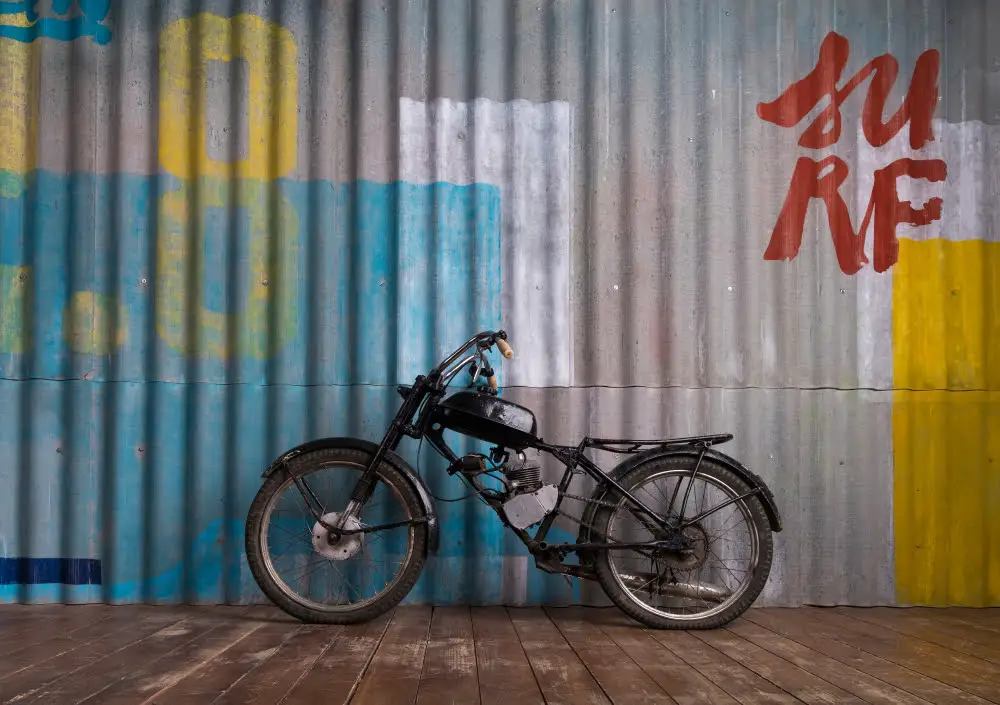
Painted murals create a visually appealing and personalized touch to any garage. By combining creativity with functionality, these unique designs offer a unique perspective on typical floor choices. They’re practical for solid concrete flooring, offering a protective layer on top of creating a distinct aesthetic.
To achieve this, proper steps need to be followed. Start with a clean, dry garage floor, removing any dirt or grease that may impede paint adhesion. Next, use a primer designed for concrete to ensure a smooth paint application. Then, choose a design that suits your personal style and the overall aesthetic of your garage. This could be a simple geometric pattern, a detailed landscape, or a bold pop of color.
Using concrete paints, recreate your chosen design on the floor. It might be helpful to sketch out your design beforehand to act as a guide. Don’t forget to seal your painted floor with a clear top coat for durability and to protect it from wear and tear.
Remember, painted murals require maintenance to keep them looking their best. Regular dusting or sweeping, coupled with occasional mild washing, will help prolong the life of your painted mural. And since paint can fade over time, you might need to apply a new top coat now and then to keep your colors vibrant. So go ahead, let your garage floor be your canvas.
Carpet Tiles
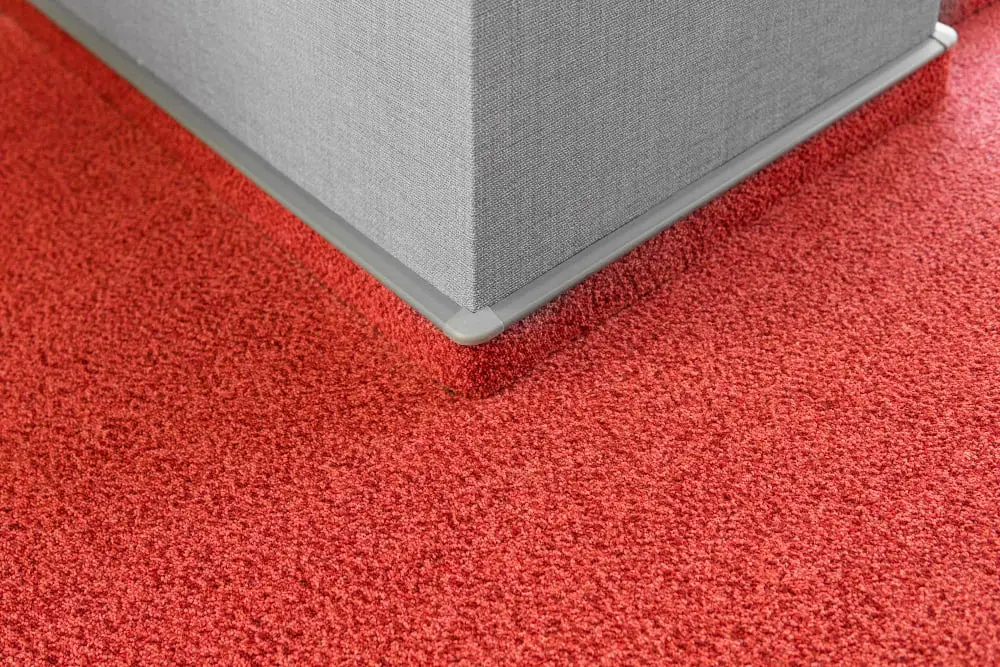
Often considered an unconventional choice for garages, carpet tiles bring in a unique combination of versatility and comfort. They come in a variety of colors, patterns, and textures to match any garage decor, offering a level of customization that’s difficult to achieve with other types of flooring.
One of the practical advantages of carpet tiles is they can be replaced individually in case one gets stained or damaged, saving homeowners the cost of replacing the entire carpet. This DIY-friendly flooring can be easily installed without professional help.
Carpet tiles also offer thermal insulation and noise reduction, perfect for those using their garages as workshops or hobby areas. Their soft surface provides a comfortable standing and walking experience, which can be a bonus for those who spend long hours in the garage.
However, a potential pitfall is their maintenance – they require regular vacuuming to remove dust and debris, and they can be sensitive to moisture, although certain brands offer waterproof versions. Therefore, choosing high-quality carpet tiles designed specifically for garages ensures durability and ease of maintenance.
A few actionable steps for homeowners:
- Consider the design and color scheme of the garage before selecting carpet tiles.
- Opt for high-quality, durable carpet tiles designed specifically for garages.
- Regularly vacuum these tiles to remove dust and debris.
- In the event of a stain or damage, replace the individual carpet tile rather than the whole carpet.
- For garages prone to dampness, consider investing in waterproof carpet tiles.
Peel and Stick Tiles
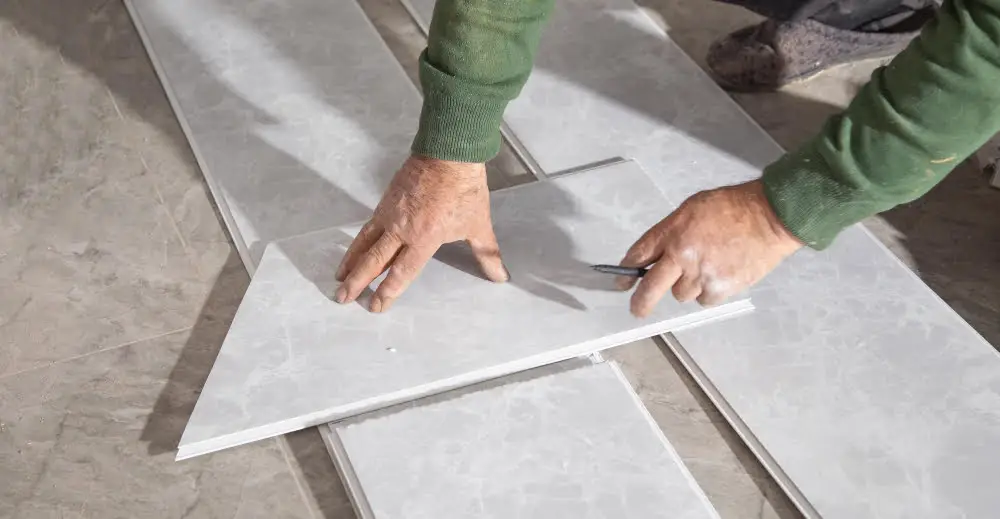
Peel and stick tiles, a versatile and affordable option, offer a wealth of benefits. Their ease of installation stands out, often requiring no professional help. Simply peel the backing off and stick them in place. It means they are an ideal choice for people with an interest in DIY projects. Available in a variety of designs and materials, from vinyl to carpet to stone-like appearances, these tiles can easily fit into any garage aesthetic.
In terms of practicality, these tiles are easy to clean and maintain. Moreover, they provide a good degree of insulation against cold concrete floors. However, they may not withstand extremely heavy loads and harsh environments as competently as some other flooring types, such as epoxy or polyaspartic coatings.
To install peel and stick tiles:
- Start by cleaning the floor thoroughly, ensuring there’s no debris or loose concrete that could interfere with adhesion.
- Plan out the layout to avoid unwanted pattern or color inconsistencies.
- Peel off the backing of the tile and place it onto the floor, applying pressure for secure attachment.
- Continue this process for the entire floor, cutting tiles to fit the edges as necessary.
Remember, for a successful application of peel and stick tiles, the underlying floor should be in reasonably good condition. Excessive damage or unevenness may affect the performance and longevity of the tiles.
Acid-etched Concrete

Acid-etching offers a unique option for your garage floor. This technique involves a mild acid solution applied to the concrete surface, creating a finish similar to sandpaper. The technique is simple and provides a grip texture, enhancing the floor’s friction.
Some key features of acid-etched concrete are:
- Slip resistance: The texture improves slip resistance, essential for wet or smooth conditions.
- Enhances the concrete aesthetic: Acid etching can bring out the rich, natural character of the concrete.
- Prepares for coating: A well-etched surface improves the adhesion of paint, epoxy, or other coatings.
Here are the steps to achieve an acid-etched concrete garage floor:
- Clean the garage floor: Remove any dust, grease, or old sealers. A pressure washer is often the best tool for this.
- Prepare the acid solution: Always follow the manufacturer’s instructions when working with acid.
- Apply the solution: Using a plastic watering can, evenly distribute the solution across the floor.
- Scrub the surface: Scrub the floor with a stiff brush to help the reaction.
- Rinse thoroughly: Wash away all the acid once the floor has achieved the desired roughness.
- Neutralize the surface: This can be performed with a basic product, such as baking soda mixed with water.
- Rinse again: Removing all residues ensures a clean floor ready for further treatments.
This notably vivid and grainy finish to your garage floor sets a pragmatic yet impressive tone in your garage decor journey.
Roll Out Vinyl
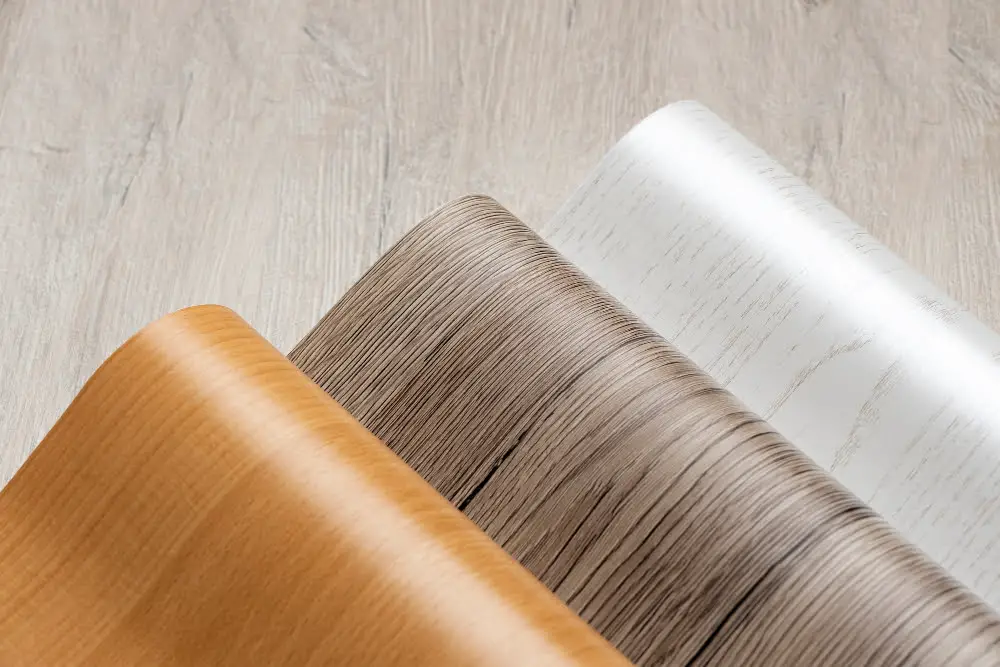
Roll out vinyl offers a selection of options for homeowners seeking a mixture of aesthetics, durability, and cost-effectiveness. As a robust surface that handles regular wear and tear with grace, it gives any garage a fresh, clean appearance. The installation process is straightforward – the vinyl rolls out onto the garage floor and then gets trimmed to fit.
Some of the points that make roll out vinyl a go-to for garage floors include:
- Variety of Designs: Its availability in numerous patterns and colors ensures compatibility with various aesthetics.
- Ease of Installation: No glue, special tools or skills required.
- Durability: The composition of roll out vinyl makes it resistant to automotive fluids, dropping tools and dragging heavy items.
- Maintenance: It’s easy to clean, requiring only a sweep or a hose down.
- Comfort: Unlike harder alternatives, vinyl offers a softer, more comfortable underfoot feel.
- Noise reduction: Its properties also help in noise dampening, a perk for busy garages.
This option is fantastic for a quick garage makeover, providing a sleek look without breaking the bank. Just be aware that vinyl can get slippery when wet, so consider this factor especially if the garage will see frequent wet conditions. It’s also important to ensure the floor is thoroughly cleaned before installation to maximize longevity and adhesion.
Flake Floor Coating

Offering a highly durable and visually appealing option, flake floor coating uses colour flake materials and strong epoxy resin. This type of flooring is especially suitable for garages for several paramount reasons.
Flake floor coating boasts exceptional resistance to abrasion, chemical reactions, and UV damage. Its durability maintains the integrity of the flooring, making it suitable for the freight and wear of workshop conditions.
Installation begins with preparing your floor by removing any existing coatings, oils or contaminants. A professional may then apply an epoxy primer, followed by an epoxy base, onto which flakes are broadcast to refusal. Once cured, excess flakes are scraped off and multiple topcoats are applied.
One of the main benefits of flake floor coating is the wide range of colors and flake sizes available. With this, homeowners can customize the design according to their preferences, matching garage aesthetics with the rest of their home’s theme.
Lastly, flake coatings are known for their non-slip surface. This characteristic improves safety in the garage area, providing extra friction even when oil or water spillages occur.
So against dust, grime, spills, and regular heavy use, flake floor coating holds up while adding a splash of personalized color to your garage. The mix of practicality, durability, and customization makes this option a standout choice for garage flooring.
Quartz Sand Coating
Regarding quartz sand coating, it’s a durable choice that not only ensures longevity but adds visual interest to a garage floor. This coating system effectively stands up to heavy traffic, ensuring minimal wear and tear. The slip-resistant nature of this material ensures the garage remains a safe space, even under wet conditions.
High stain resistance is another notable feature. Whether you’re working on a car or carrying out DIY projects, you won’t have to worry about stubborn stains embedded in the surface. As cleaning this type of floor is seamless, it’s perfect for a garage set-up.
To apply, you must first prepare the surface. This involves removing any existing coatings and repairing any cracks or chips. Once the preparation is complete, a layer of epoxy resin is applied. While the resin is wet, quartz sand is liberally sprinkled over it. The resin is then left to cure, permanently binding the sand to the surface. You can also choose a topcoat for increased durability and a glossy finish.
Aesthetically, there are numerous options for customization with this floor type. Quartz sand is available in an array of color variations, so you can create something that perfectly matches your style and the overall decor of your garage.
Quartz sand coating, though initially may seem expensive, offers a cost-effective solution in the long run with its long-lasting durability and low maintenance cost.
Metallic Epoxy

Metallic epoxy is a unique solution that adds a stunning display of multi-layered, multi-dimensional color patterns to the garage floor. Its unique metallic additives, when mixed with classic epoxy resin, produce a reflective and eye-catching look. This flooring style is perfect for enhancing the aesthetic appeal of your garage without compromising on strength and durability.
Here are the key aspects of metallic epoxy:
- Rich Visual Appeal: Easily create your flooring masterpiece, thanks to swirls and cells of metallic pigment offering a marbling effect.
- Customizable Look: Multiple layers of metallic pigment give a beautiful depth, allowing custom patterns. It can be dyed with many colors enhancing floor aesthetics.
- High Durability: Metallic epoxy resists chipping, chemical spills, impacts, scuffs, and tire marks, offering a long-lasting finish.
- Steps for installation includes degreasing the garage floor, grinding or shot blasting to open pores & remove old coating, filling cracks & divots, mixing the primer, base coat & metallic pigment, finally sealing with a topcoat.
Remember, application requires a professional for an effective result, due to the need for precise mixing and artistic application techniques. Be advised, metallic epoxy flooring can be somewhat slippery when wet, so anti-slip additives might be a necessary consideration.
Resin and Terrazzo Floor
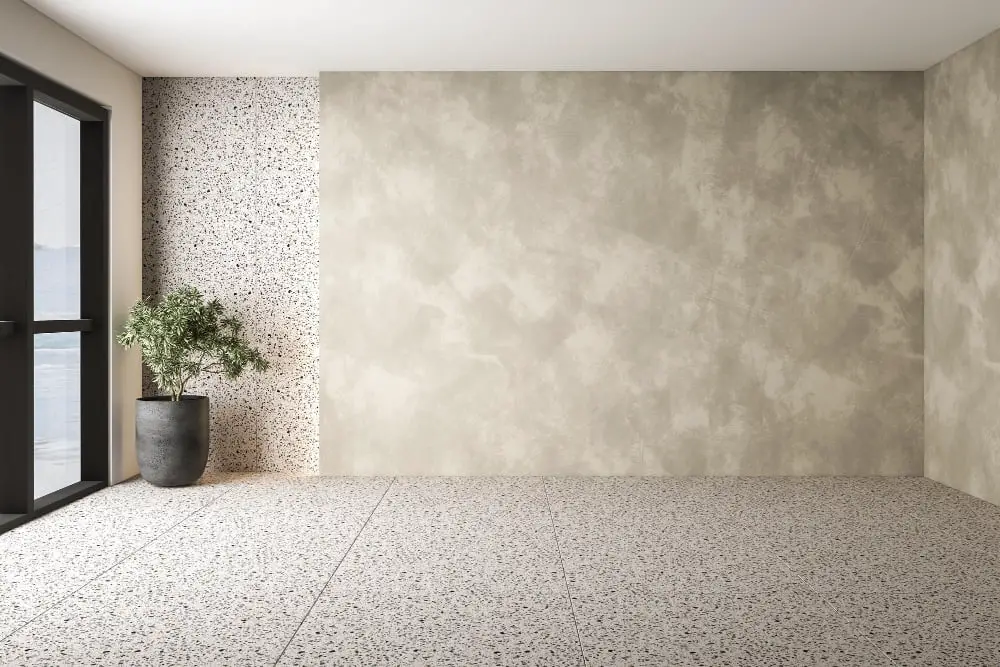
Championed for its versatility and durability, resin and terrazzo flooring is an innovative choice for garage floors. It entails combining chips of marble, quartz, granite, and even glass with a resinous binder.
A highlighted feature is its durability, resisting damage caused by impact or heavy loads. With strong resistance to chemical spills and stains, it’s a cost-effective option for those looking for longevity.
Fashioning a distinct, custom look is easy as the composition can be tailored according to color or texture preference. Each floor design would inherently be unique, depending on the mix of the materials selected.
Its maintenance regime is simple. Regular sweeping and periodic damp mopping, with the occasional polish, would keep the floor in optimal condition. Use mild, pH-neutral cleaners to avoid damage to the sealant.
Installation demands precision, and professional help is recommended for achieving the best results. The procedure includes prepping the floor, applying the epoxy resin, spreading the mixture, and finally, applying the sealant.
While the upfront cost might be a bit steep, the low-maintenance nature and high durability offers great value for the long term.
